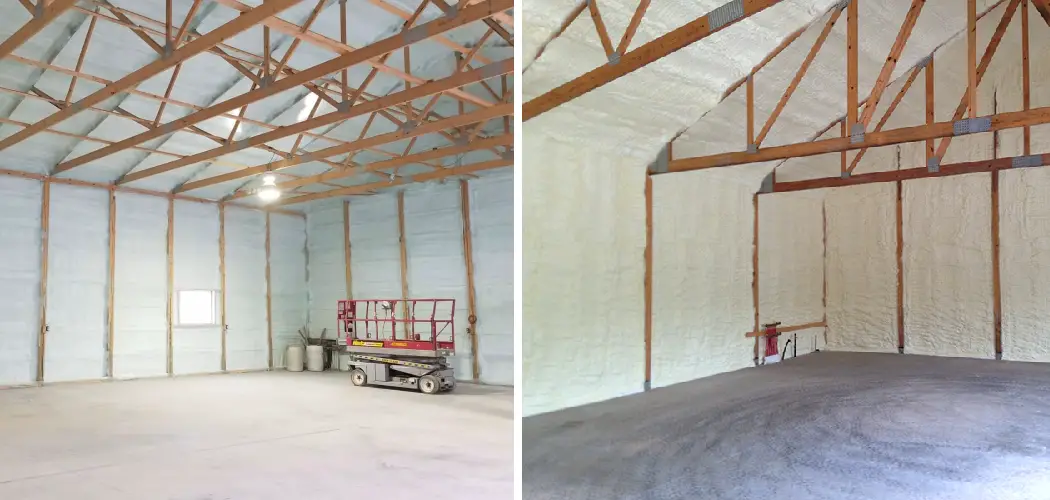Are you looking to invest in an outdoor post-frame building, such as a garage or workshop? If so, it is important that you ensure your structure is effectively insulated. Not only will this give your building year-round functionality and protection from the elements, but it can also help reduce energy costs due to improved insulation performance.
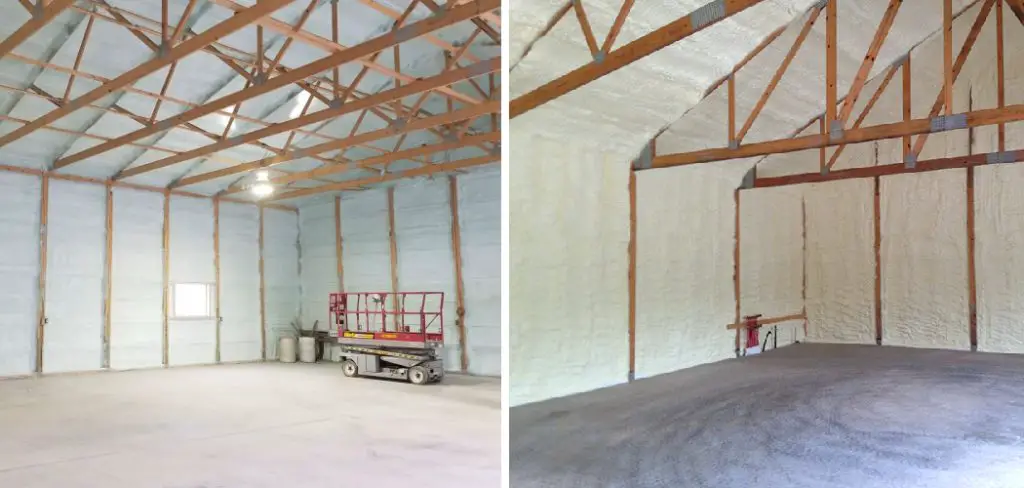
In this blog post, we’ll cover the basics to insulate a post frame building using spray foam insulation – exploring all the essential components needed for successful project completion.
Insulating such buildings can be a challenge, but when done correctly it can make all the difference in terms of energy efficiency and overall comfort. In this blog post, we will walk you through exactly how to properly insulate a post frame building from start to finish – making sure that each step is done right so that you have the most efficient and comfortable space possible!
With helpful tips, tricks and detailed instructions, by the time you’ve finished reading this article, you’ll know everything there is to know about how to insulate a post frame building.
Why May You Want to Insulate a Post Frame Building?
1 . Improved Comfort
Insulating a post-frame building helps to keep the temperature inside the building more consistent year-round, regardless of outside temperatures. This means you’ll stay comfortable in your workshop or garage for longer periods of time and won’t need to worry about extreme heat or cold when working on projects inside.
2 . Environmental Benefits
By insulating your post-frame building, you’ll also be able to conserve energy and reduce emissions. This is because insulation helps to trap heat inside the building, reducing the amount of energy needed to keep it warm or cool. Additionally, it will also help protect the environment from pollutants that are released when inefficiently heated or cooled structures are used.
3 . Lower Energy Bills
Insulating your post-frame building helps to reduce the amount of energy needed to keep it warm or cool, which in turn means lower energy bills. This is because insulation traps heat inside the building and keeps it there for longer periods of time – meaning you won’t have to run the air conditioner or furnace as often.
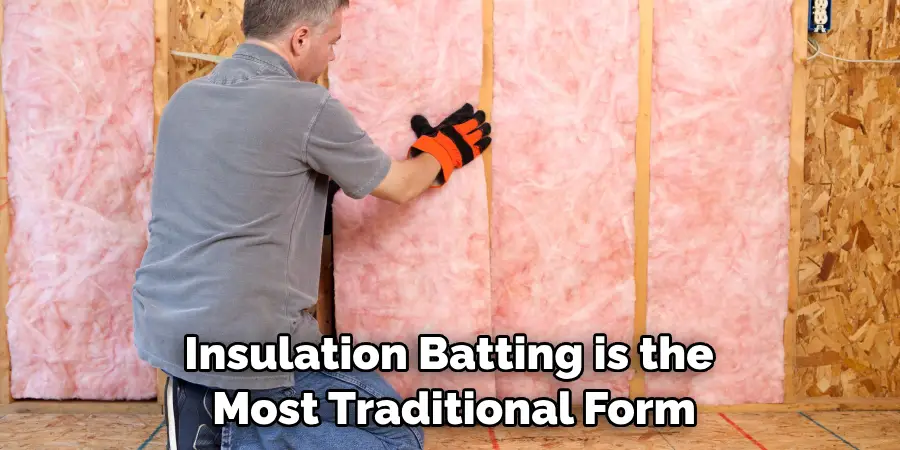
13 Ideas on How to Insulate a Post Frame Building
1 . Install Insulation Batting
Insulation batting is the most traditional form of insulation and can be easily cut to fit in any gaps or corners. This is especially useful for filling complex areas, such as around window frames, doorways, or other hard-to-reach places. In addition, it helps minimize drafts and air leakage, making your post-frame building more energy efficient.
2 . Choose the Right Insulation Type
When insulating a post-frame building, it is important to choose the right type of insulation for your needs. The most popular option is fiberglass batting insulation, which offers excellent soundproofing and thermal protection capabilities. Other options include cellulose or spray foam insulation, both of which can be used to increase the energy efficiency of your structure.
3 . Invest in Radiant Barriers
Radiant barriers are an effective way to improve the insulation capabilities of a post frame building. These barriers consist of reflective material that is placed on the top and/or bottom layer of the roof, helping to prevent heat transfer from outside into your structure.
4 . Consider Sealing Air Leaks
The best way to improve the insulation of your post frame building is to seal any air leaks. This can be done by checking for gaps around windows, doors, and other openings. If you find any cracks or holes, use caulk or expandable foam insulation to fill them in and prevent heat loss.
5 . Install Exterior Weatherization
Adding exterior weatherization to your post-frame building can help improve its insulation. This includes items such as siding, flashing, and caulking, all of which can help seal the structure and keep warm air inside. It is also important to check for any gaps in the structure itself and fill them with insulation.
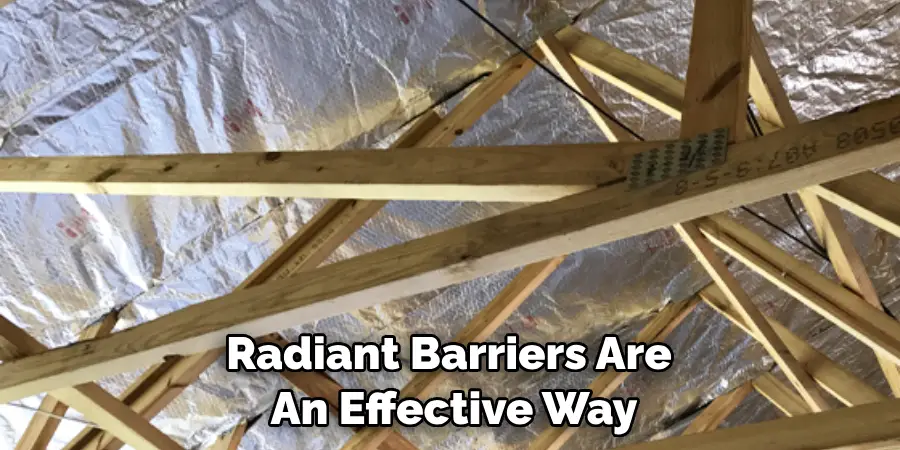
6 . Insulate the Roof
Insulating the roof of a post-frame building is also important for improving its energy efficiency. The best options are rigid foam boards, spray foam insulation, and reflective barriers. These materials can help create thermal protection and reduce air leakage from both inside and outside your structure.
7 . Increase Wall Insulation
Most post-frame buildings are built with wood walls, which can be difficult to insulate. To increase the insulation of your structure, consider adding additional layers such as spray foam insulation or fiberglass batts. This will help create an airtight barrier and prevent heat loss from your building.
8 . Install Foam Board Insulation
Foam board insulation is a great way to increase the energy efficiency of your post-frame building. This type of insulation comes in sheets and can be easily cut to fit any area, including around windows and doors. It also helps reduce air leakage from both inside and outside the structure, helping to keep warm air trapped inside.
9 . Consider a Radiant Heat System
In addition to traditional insulation methods, consider installing a radiant heat system. These systems work by transferring heat up through the ceiling and down into your living space, helping to make it more comfortable in the winter months. It is important to consult an expert when considering this type of installation for your post-frame building.
10 . Utilize Insulated Siding
Insulated siding is an excellent way to improve the insulation of your post-frame building. This type of siding consists of two layers – a layer of foam and a vinyl outer layer – which helps keep warm air trapped inside. It also helps reduce noise from outside, making your structure quieter and more comfortable.
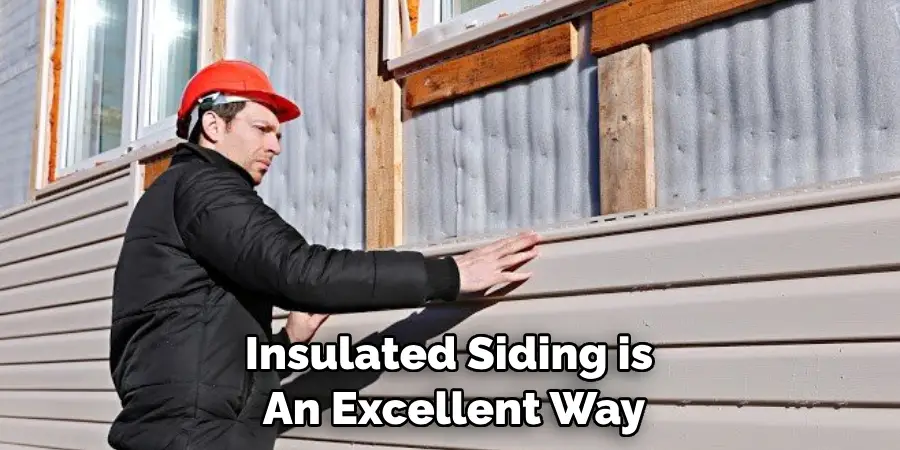
11 . Install Insulated Windows
Windows can be a major source of heat loss in post-frame buildings. To reduce this, consider installing insulated windows. These windows are designed to prevent air leakage, while also blocking out any excess noise from outside the building. This is especially important during colder months when you want to keep your living space warm and cozy.
12 . Consider Insulated Doors
In addition to windows, it is also important to consider insulating doors in a post-frame building. These doors are designed with two or three layers of foam insulation, which helps keep heat trapped inside the structure while also reducing noise from outside. It is especially important to install insulated doors in locations that are exposed to the outdoors, such as entryways or garages.
13 . Utilize Insulated Garage Doors
If your post-frame building includes a garage, it is important to insulate the door of this space. Insulated garage doors are designed to reduce noise and thermal transfer from outside, helping to keep the temperature of your structure more comfortable. In addition, these doors can help create an airtight seal and improve the energy efficiency of your building.
By following these tips, you’ll be able to effectively insulate a post-frame building and enjoy all the benefits that come with it! Improved energy efficiency, noise reduction, and thermal protection are just a few of the advantages you can enjoy, making your structure more comfortable and energy-efficient.
You can also consider adding other insulation features, such as reflective panels or solar shades, to further improve the thermal retention of your post frame building. With a variety of options available, you’re sure to find the perfect solution for your needs!
Frequently Asked Questions
What Precautions Should I Take Before Starting the Insulation Process?
There are several precautions you should take before beginning to insulate a post frame building. Wear protective gear such as goggles, gloves and respirator masks. Make sure the area is well-ventilated.
Open windows or use fans to circulate air during and after the insulation process. If you are using spray foam insulation, cover any nearby surfaces to avoid damage. Finally, make sure the support and frame of your building is in good condition before beginning.
What Type of Insulation Is Best for Post Frame Buildings?
The type of insulation best suited for post-frame buildings depends on several factors including climate, budget and desired performance. In general, fiberglass batt insulation is the cheapest option and is a good fit for mild climates.
Foam board insulation is better suited for extreme climates due to its superior air-sealing capabilities. Spray foam insulation can provide both air sealing and thermal protection, but tends to be more expensive than other options.
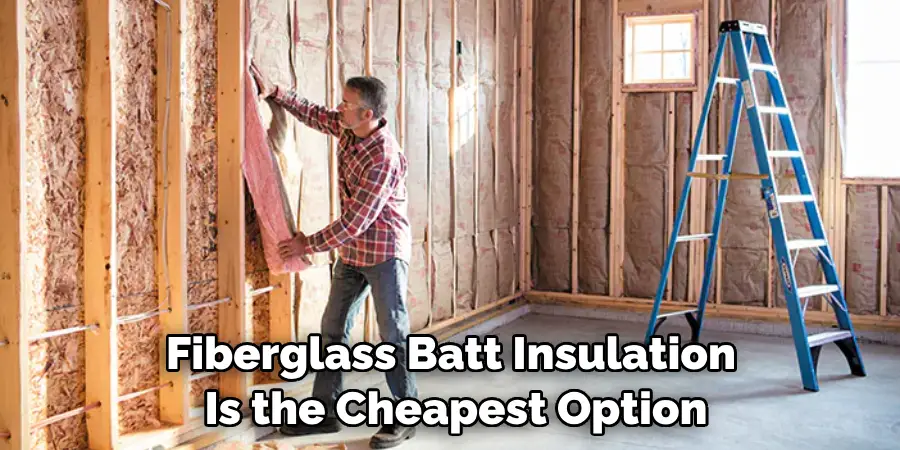
How Much Insulation Is Needed for a Post Frame Building?
The amount of insulation needed depends on the size, climate and type of building you are insulating. In general, R-value ratings will give you an idea of how much insulation is necessary. The higher the R-value, the better suited your insulation material is to provide thermal protection in colder climates. It’s important to consult a professional to get an accurate estimate of the insulation you need.
How Do I Install Insulation in My Post Frame Building?
Your installation method will depend on the type of insulation you have chosen. For example, fiberglass batt insulation should be installed between interior wall studs and covered with drywall while foam board can be attached to the wall or ceiling with adhesive. Spray foam can be installed using a spray gun and requires special safety precautions.
Conclusion
Insulating a post-frame building can be an intimidating task but with the right information and materials, it is within reach. Now that we’ve discussed the different types of insulation, the materials needed to properly insulate your building, and safety precautions you should take when doing so, you’re ready to begin your project.
Now you know how to insulate a post frame building! When taking on this type of project, it’s important to remember that comfort is based on individual preferences. It’s beneficial to do research and consult with experts if necessary in order to understand what needs to be done in order for your building to have proper insulation.
It may require some trial and error when finding the best balance between saving energy costs and attaining optimal comfort. With dedication and research, you’ll soon be standing in a flawlessly insulated post frame building basking in warmth and contentment.

